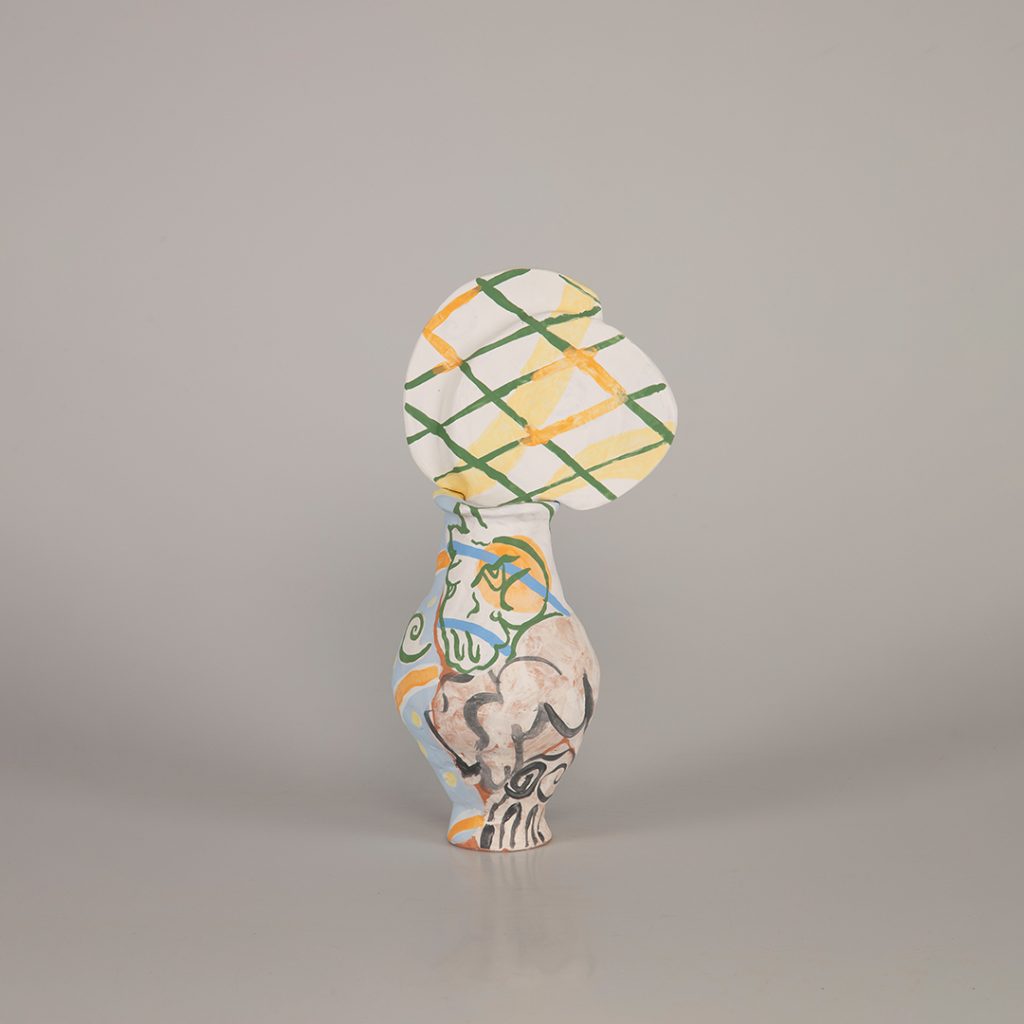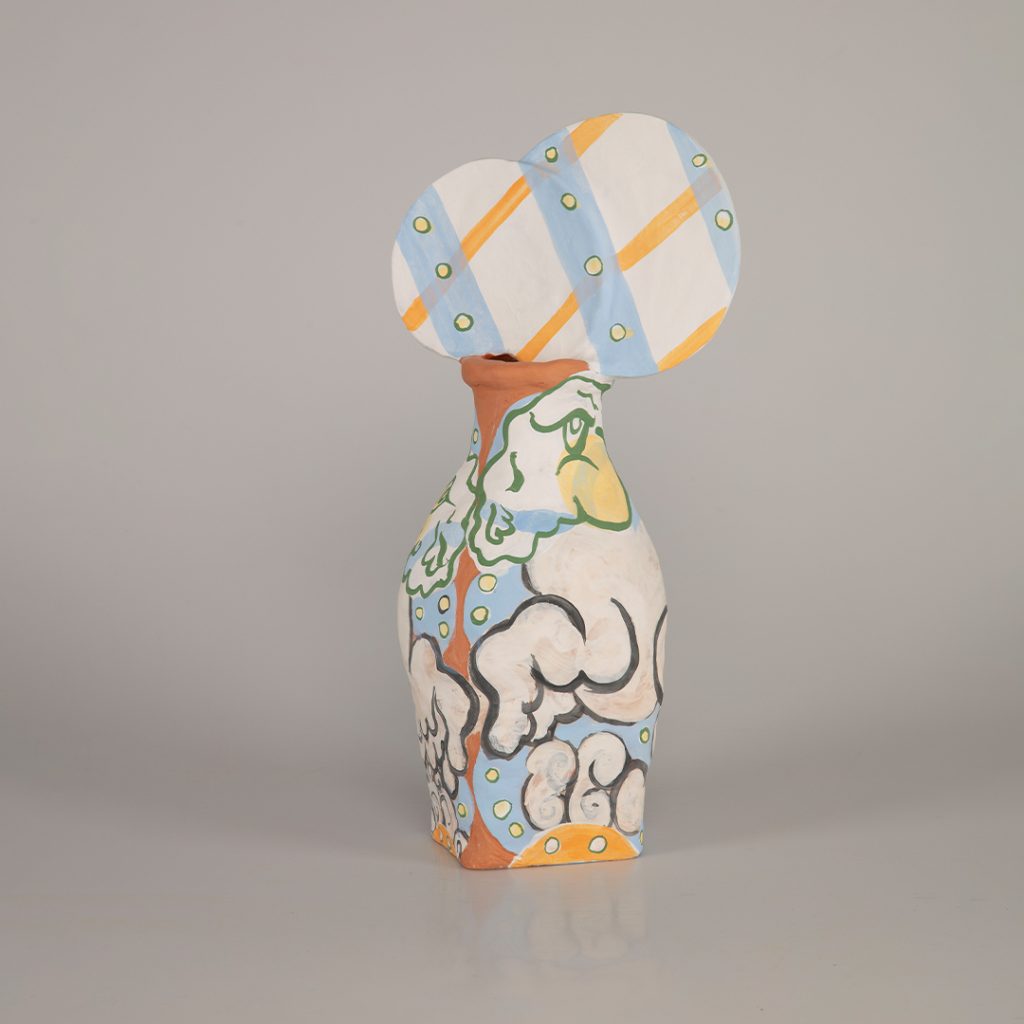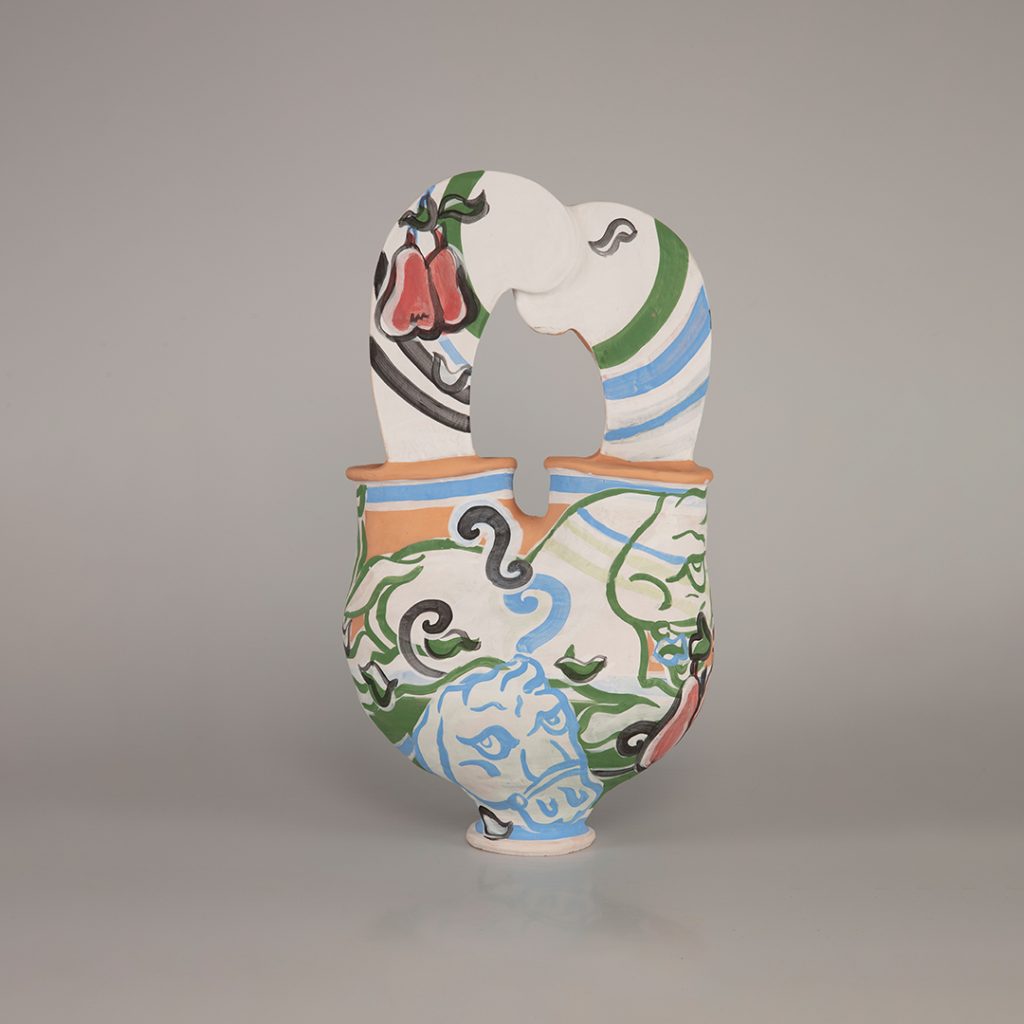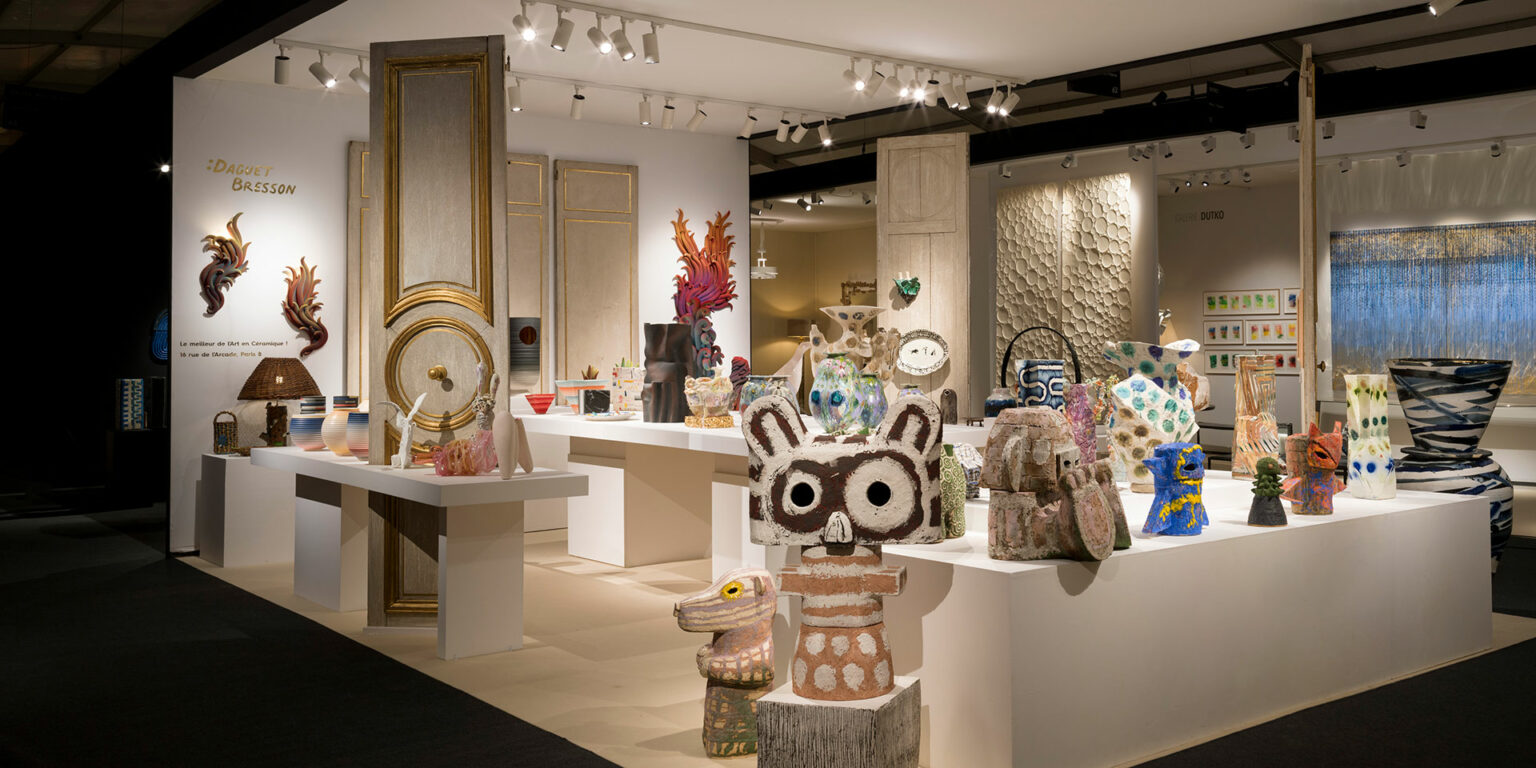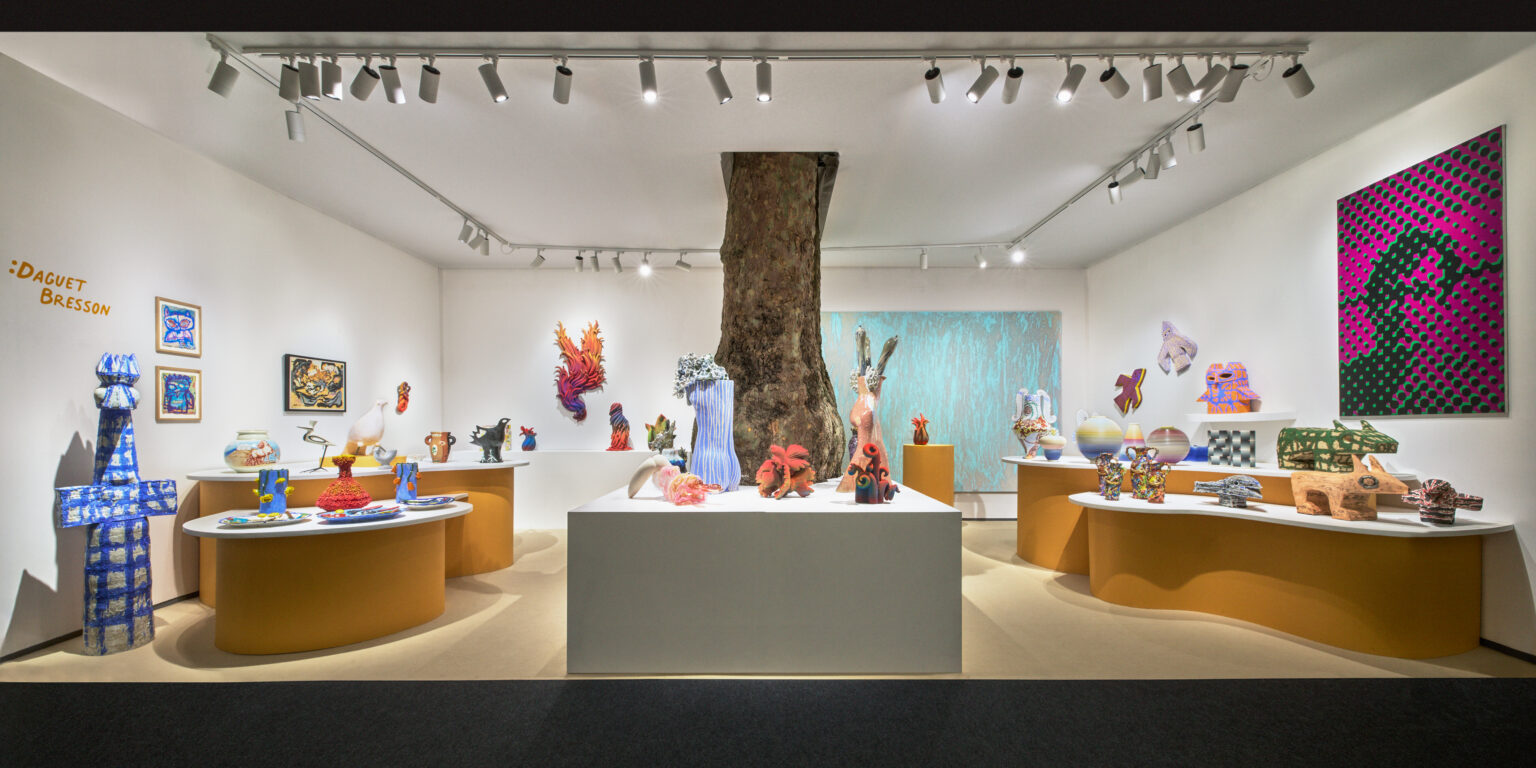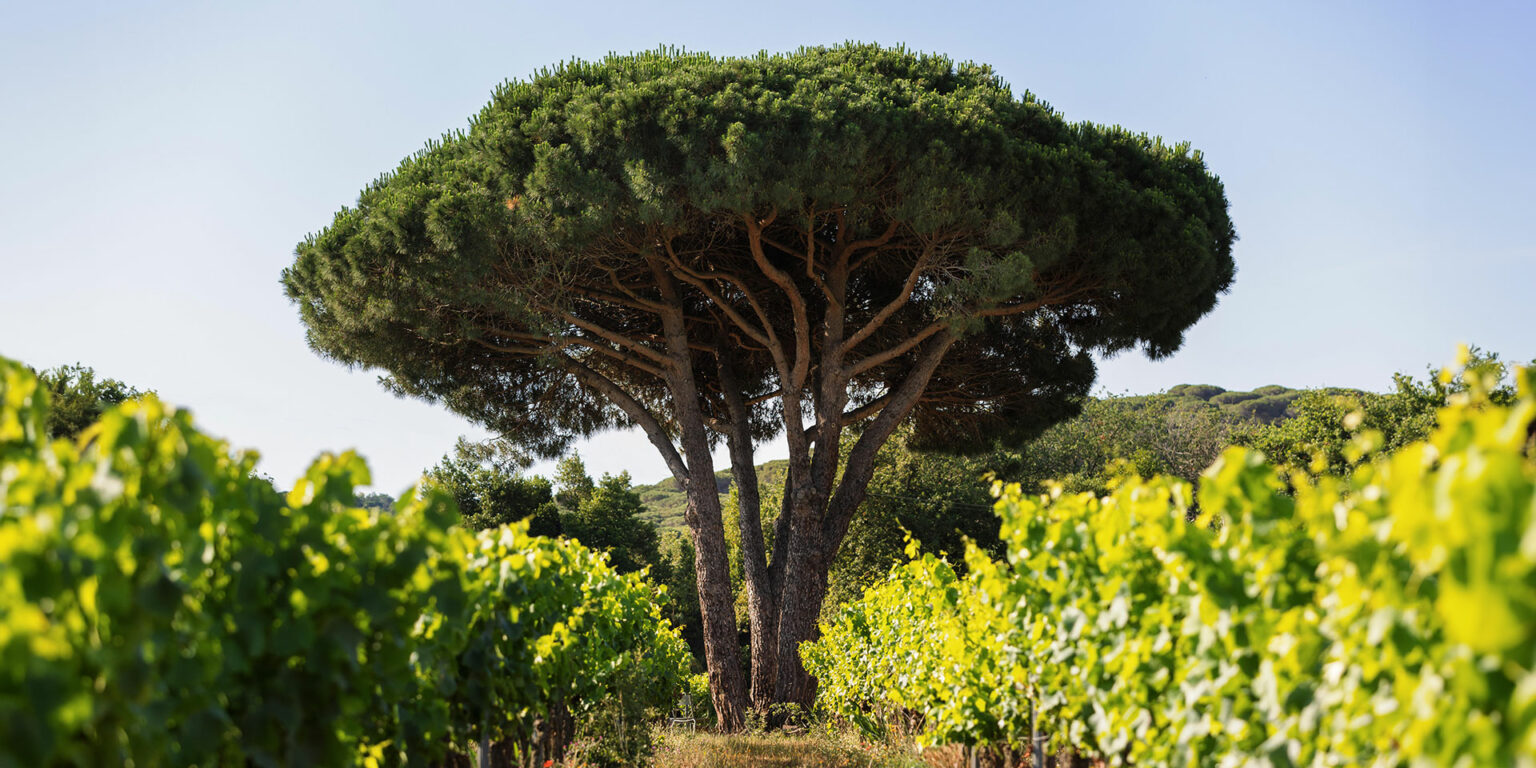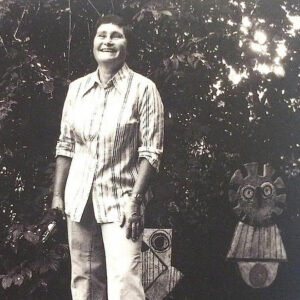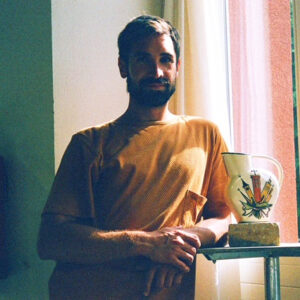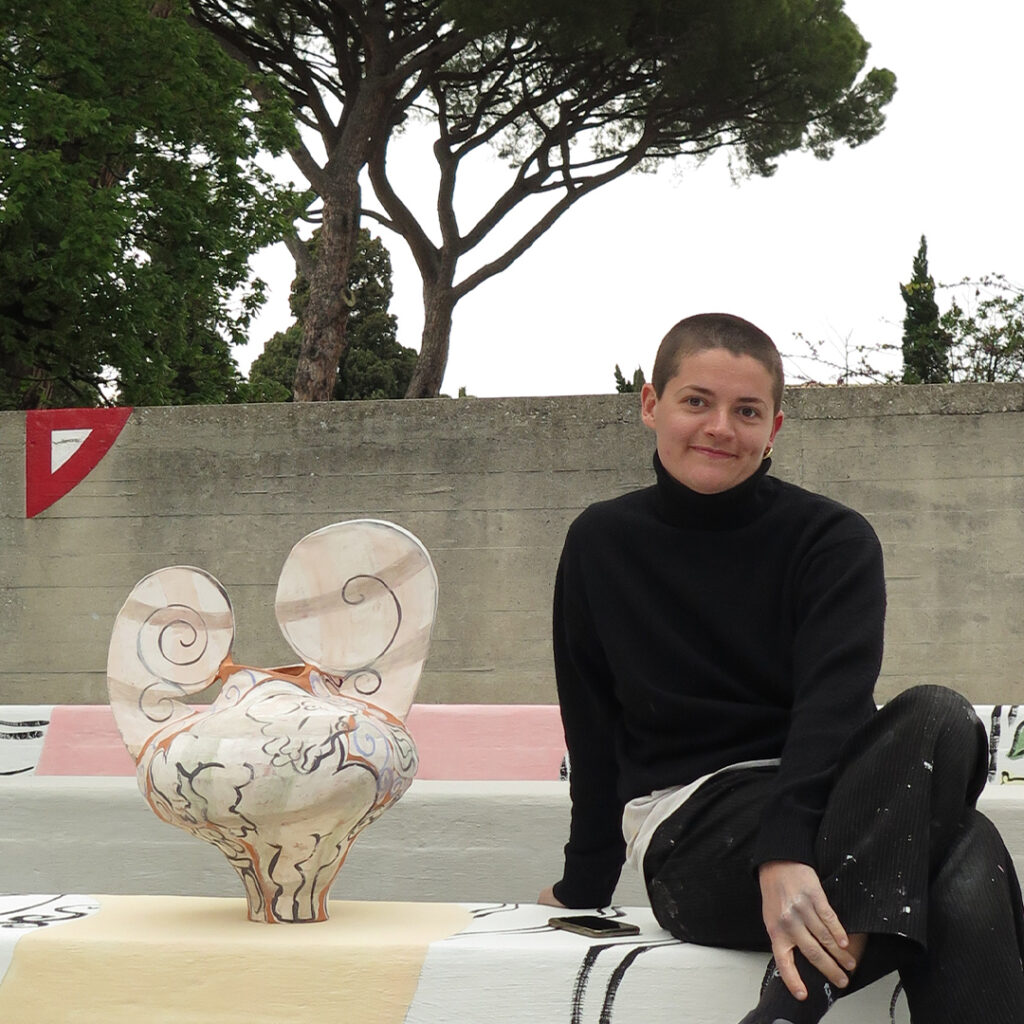Perrine Boudy
Perrine Boudy (born in 1995 in Versailles) develops a practice that combines drawing, ceramics, and installation, where body, object, and decor intertwine with humor and delicacy. A graduate of Villa Arson (Nice, 2023) following her studies at the Atelier de Sèvres, she explores an aesthetic of the fragment and the motif, oscillating between antique reference and contemporary pop sensibility. Her universe blends the playful naïveté of sketchbooks with strong formal control, each piece becoming a narrative space, a kind of miniature theatre.
Her work has been shown at Drawing Now (Paris, 2024), Ceramic Brussels with Sorry We’re Closed Gallery, as well as at Galerie Valérie Delaunay (Paris, Marseille, Villefranche-sur-Mer) and Villa Arson. She also collaborates with everyday spaces such as the Hôtel Amour (Nice), merging art and daily life.
Featured in Beaux Arts Magazine, Art Press, The Drawer, and Maison, Boudy stands out as an emerging voice in the young French art scene, where ornament once again becomes a field of critical and sensuous exploration. She lives and works in Nice.



